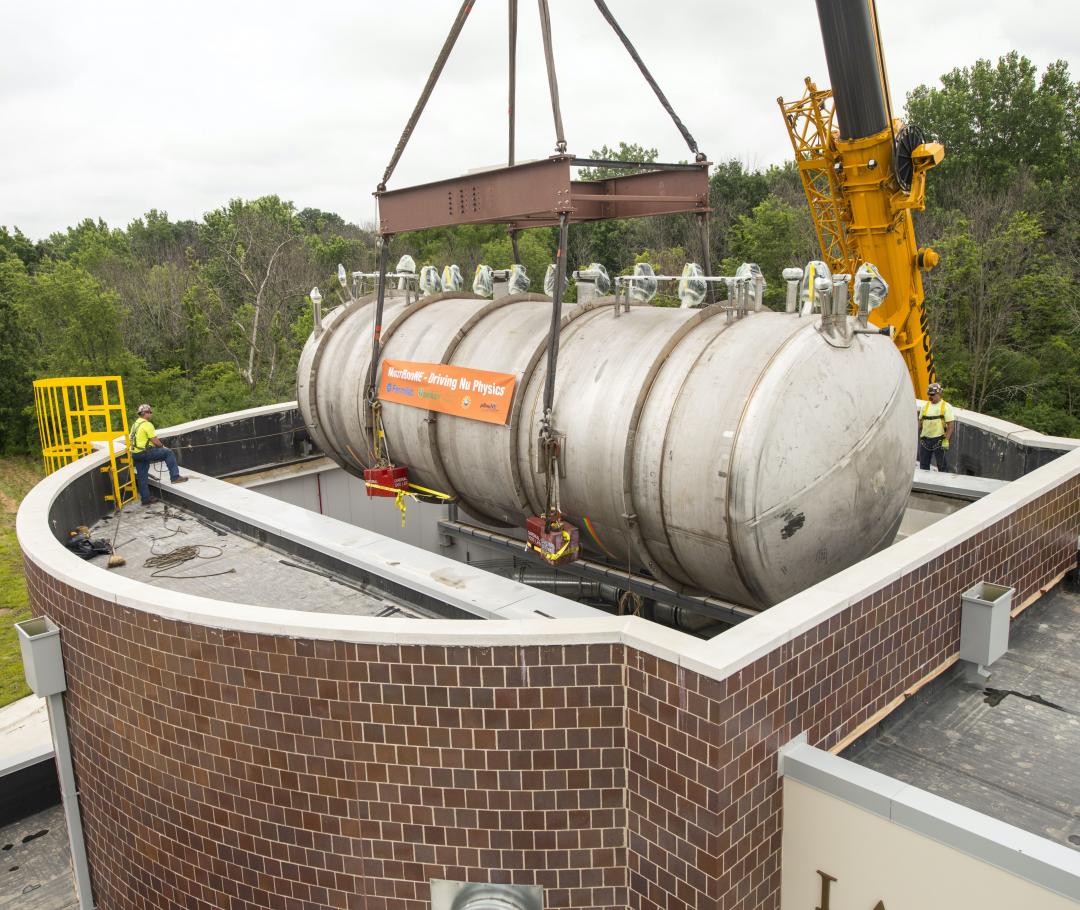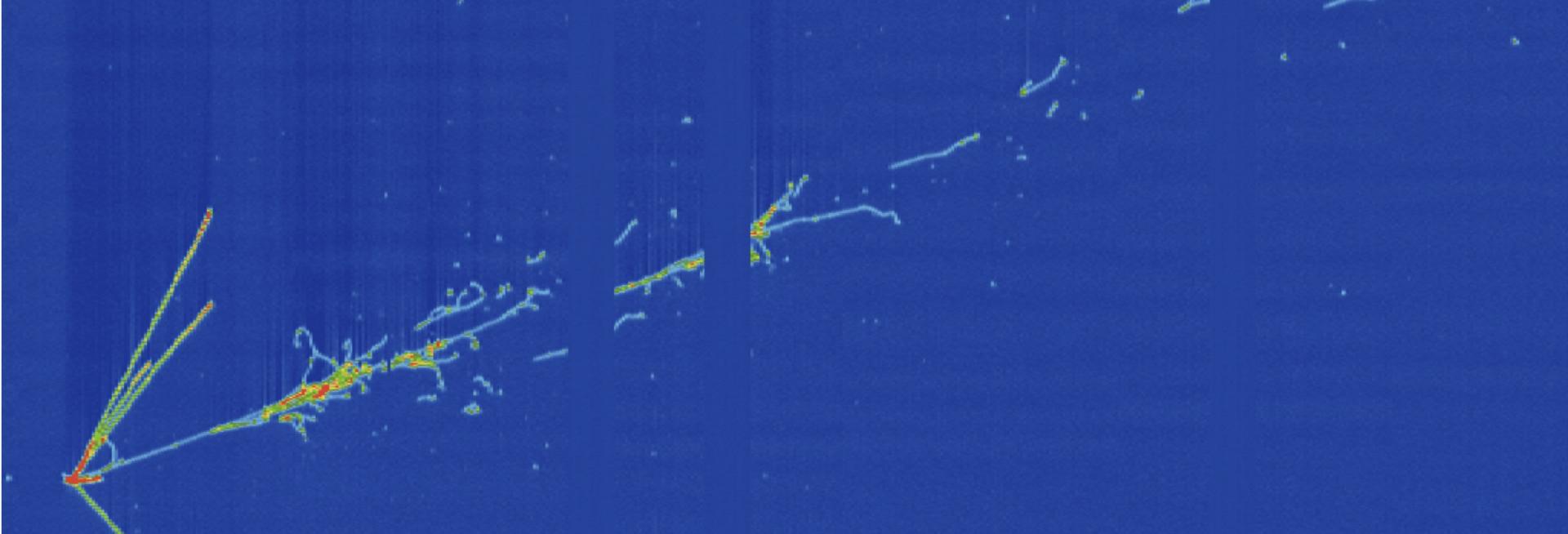
MicroBooNE is a 170 ton Liquid Argon Time Projection Chamber (roughly the size of a small bus) located at Fermilab near Chicago, Illinois. It is a pioneer in the U.S. Liquid Argon detector programme, having collected over 500,000 neutrino interactions since 2015. The MicroBooNE collaboration consists of around 180 scientists from 36 institutions worldwide, with significant presence in the U.K.
Investigating the MiniBooNE anomaly
MicroBooNE was built to test an anomaly seen in the MiniBooNE experiment, operated at Fermilab from 2002. MiniBooNE observed "too many" electron neutrinos in their data, especially at low energies. The explanation for this is still unknown - some suggested that it could be evidence of a new kind of neutrino, a so-called sterile neutrino. However, the MiniBooNE detector could not differentiate well between signals of electrons or photons, so more data was needed to really understand what was seen.
MicroBooNE is located very close to MiniBooNE, in the same neutrino beam at Fermilab -- the idea is that if neutrinos were behaving strangely at MiniBooNE, they would do the same in MicroBooNE. The MicroBooNE detector can see neutrino interactions in much more detail and -- crucially -- can distinguish electrons from photons. MicroBooNE released its first investigation into the MiniBooNE low-energy excess in 2021 and saw no excess either in the neutral-current delta radiative decay single photon channel or a number of single-electron channels. These results add a very interesting new piece to the puzzle, but we still don't know what did cause the MiniBooNE excess. MicroBooNE is continuing to investigate, with a number of new analyses underway.
Neutrino interactions
The fundamental difficulty with all neutrino experiments is that neutrinos themselves are invisible in our detectors. Because they are light, electrically neutral, particles, they leave no trace. Often the only sign we have that a neutrino was there is when it interacts in the detector, producing secondary charged particles that we can track. We end up trying to work backwards from what we measure in our detector to trying to understand the neutrino that produced it, and work out its flavour and energy. Because of this, a good understanding of how neutrinos interact is vital -- any misunderstandings in our neutrino interaction model could directly result in uncertainties or errors in our measurements of fundamental parameters like neutrino oscillation or charge-parity violation.
Liquid argon detectors provide exquisite images of neutrino interactions, but it comes at a price: argon is a large nucleus and nuclear effects are significant. That adds an extra layer of complication to predicting neutrino interactions on argon. MicroBooNE is making -- in many cases the first ever -- high statistics measurements of neutrino interactions on argon to measure these processes directly. The measurements we make will be of great interest to future experiments using liquid argon detectors, such as Fermilab's Short Baseline Neutrino programme and DUNE.
The Oxford Group on MicroBooNE
The Oxford group on MicroBooNE is led by Dr. Kirsty Duffy. Dr. Duffy is Physics Analysis Coordinator for the MicroBooNE collaboration; previously (2019-2021) she served as Co-Convener of the Cross Section Physics Group. Her research interest is particularly in neutrino interactions in argon -- she is currently working on a measurement of muon neutrino interactions that produce a single charged pion, as well as a measurement of electron neutrino interactions that produce at least one proton but no pions.

